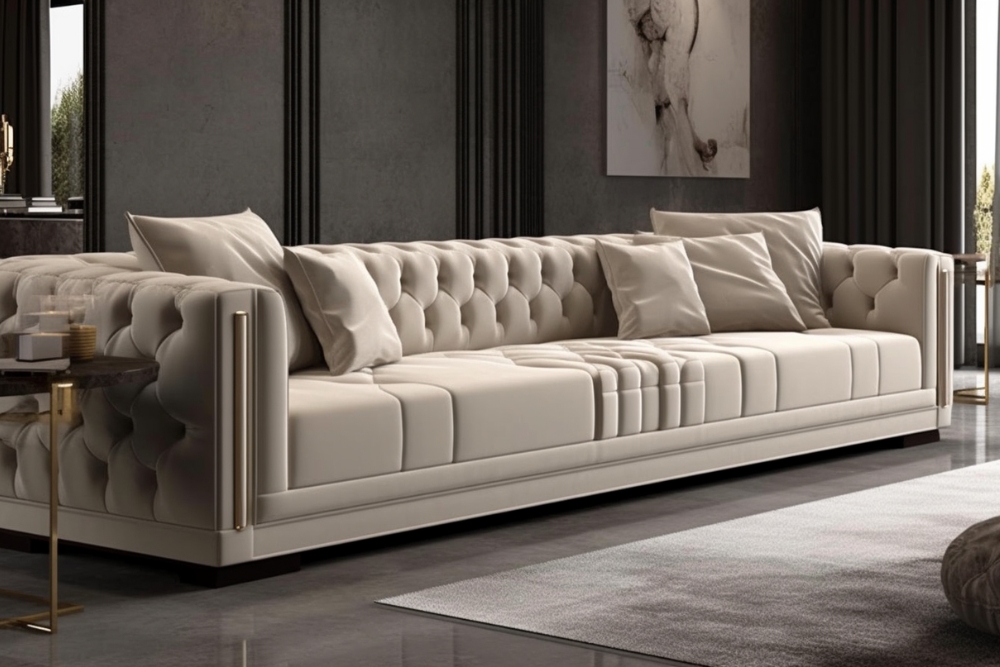How to Pick the Ideal Sofa or Couch for Your Home
Choosing the right sofa or couch shapes the look and comfort of your living space. This detailed guide walks you through measuring your room, selecting durable materials, assessing comfort and construction, and understanding price ranges and styles. Learn how to balance size, support, fabric, and design to find a long-lasting, stylish sofa that fits your lifestyle and budget.

Size and space planning
Choosing a sofa starts with accurate measurements. Measure the room, keep doorways and stairwells in mind, and visualize how the piece will move into place. Typical widths help as a guideline: a standard three-seat sofa is usually around 84–88 inches wide, and loveseats commonly fall between 58–64 inches. Also plan for circulation: allow roughly 18 inches of walking clearance around seating so traffic can flow without brushing upholstery. Think about scale too — a large, low sofa can overwhelm a small room, while a petite piece may look lost in an open plan living area. Match proportions to other furniture and leave space for side tables, lighting, and pathways.
Fabrics and longevity
Material selection affects both the look and lifespan of your sofa. Leather is prized for its durability and ease of cleaning, and it develops character over time, but it often carries a higher price tag. Performance fabrics such as Sunbrella or Crypton are engineered to resist stains, wear, and fading — excellent choices for households with kids or pets. Natural fibers like cotton and linen provide a breathable, comfortable feel but usually need more careful maintenance. When choosing a fabric, consider daily use, potential spills, pet claws, and exposure to sunlight. Removable, machine-washable covers are a practical option for high-traffic homes.
Comfort, cushions, and ergonomics
Comfort depends on construction more than appearance. Cushion fillings vary: high-resilience foam retains shape well and provides firmer support, while down-wrapped foam blends softness with structure for a plusher seat. Consider seat depth and height for your comfort: deeper seats are great for lounging but can be less supportive for shorter people or upright seating needs. Testing a sofa in person is invaluable — sit for several minutes to judge lumbar support, edge firmness, and overall comfort. Pay attention to how spring systems feel: options include sinuous (S-shaped) springs, which offer reliable support at lower cost, and eight-way hand-tied springs, which provide a long-lasting, balanced feel but typically come at a premium.
Frame and build quality
A well-built frame is essential for long-term performance. Look for frames made from kiln-dried hardwoods — they resist warping and cracking better than softwoods. Construction details to check include reinforced joints, corner-blocking, and methods like double-doweled or mortise-and-tenon joinery, which add strength at stress points. When you sit, the frame should feel solid and quiet, without creaks or flex. Cheap frames often use particleboard or softwoods that can sag or break under regular use.
Price brackets and what to expect
Different price levels reflect materials, craftsmanship, and customization. Entry-level sofas can be budget-friendly but may use simpler frames and limited fabric options. Mid-range pieces usually offer better construction and a wider variety of styles and fabrics. High-end sofas provide premium materials, advanced spring systems, and extensive customization for a long-lasting investment. Consider your priorities — whether you want a temporary solution, a dependable family sofa, or a heirloom-quality piece — when setting your budget.
| Category | Price Range | Features | Best For |
|---|---|---|---|
| Entry-Level | $500–$1,000 | Basic frame, limited fabric choices | Starter homes, temporary needs |
| Mid-Range | $1,000–$3,000 | Improved materials, more style options | Everyday family use |
| High-End | $3,000–$10,000+ | Premium fabrics, customization, superior construction | Luxury homes, long-term investment |
Prices, rates, or cost estimates mentioned in this article are based on the latest available information but may change over time. Independent research is advised before making financial decisions.
Style, color, and pattern choices
Select a design that complements your décor while remaining flexible enough to survive changing trends. Neutral hues give you more versatility for accessories and are easier to live with, while bold colors or statement fabrics can transform a room. Consider pattern scale: large prints can overwhelm small rooms, while subtle textures add interest without dominating the space. Removable covers let you refresh the look later without replacing the whole sofa. Also think about arm and leg styles — exposed legs can make a room feel airier, while skirted bases create a more formal appearance.
Final considerations and checklist
Before you buy, test a few models in person and verify delivery logistics for access, elevator, and stair constraints. Ask about warranty coverage, cushion replacement policies, and fabric cleaning recommendations. Balance aesthetics with practical needs: a beautiful sofa that wears quickly won’t be satisfying long term. Investing time in research — measuring, trying different seat depths, comparing materials, and checking construction details — will help you choose a sofa that looks great, feels comfortable, and stands up to daily life.
A thoughtfully chosen sofa becomes a central, long-lasting part of your home. Prioritize the elements that matter most for your household — size and scale, fabric performance, comfort level, and construction quality — and you’ll find a piece that enhances both the function and style of your living space.






